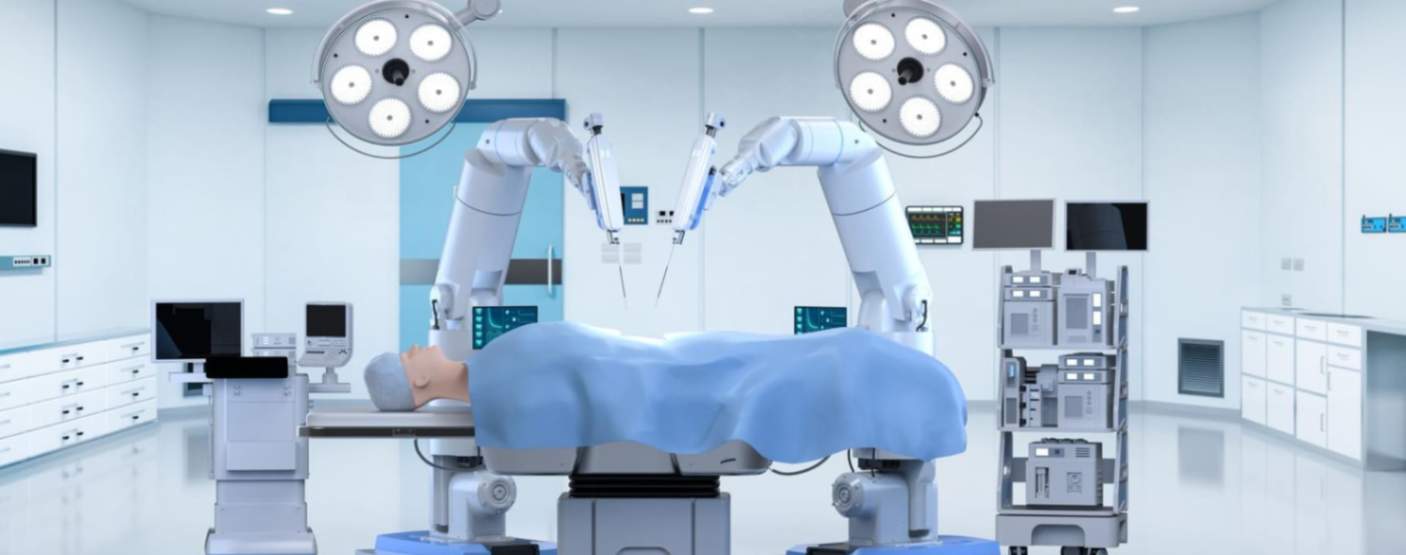


Discover how AI-powered operating room automation cut surgical errors by 80% and saved $4M annually in this case study by Dash Technologies.
Surgical teams face mounting pressure lately. Packed schedules loaded with complex procedures, razor-thin error margins; it’s coming from every direction. Artificial intelligence isn’t replacing anyone here. Think of it more as a reliable backup; the kind you’d genuinely want to stand beside you. Browse through any AI in surgery success story and you’ll notice a pattern: skilled surgeons partnering with smart automation produce quantifiable wins. Mistakes decline. Procedures accelerate. Patients recover faster.
Hospital executives are becoming this reality now. Traditional methods? They’re failing. Clunky manual processes and systems that won’t communicate hold everyone back. This AI-powered MedTech solutions project documents exactly what happened when a heavyweight global innovator partnered with Dash Technologies Inc. Their aim was straightforward yet ambitious: to remake their operating rooms into intelligent hubs where clinical professionals and technology mesh seamlessly.
Our client is a multinational MedTech company, and hospitals all over the world depend on their intelligent surgical systems and OR technologies daily. They’ve been in this industry for over a decade, constantly working to bring robotics, imaging, and data precision together in products that genuinely help.
What drives them? They want surgeons to see better during procedures, have tighter control over instruments, and feel confident using their equipment.
Despite advanced surgical devices, operational workflows remain problematic. Manual processes dominate. Data exists in isolated systems. Platforms lack interoperability. This creates a fundamental misalignment: while hardware represents cutting-edge innovation, surrounding operations reflect outdated practices. The gap between AI-powered MedTech solutions and fragmented processes has become the organization’s primary strategic concern.
Operating rooms demand precision and speed. This healthcare organization, however, watched its surgical personnel spend excessive time on manual documentation and work with disconnected technology infrastructure. Advanced surgical instruments existed in their facilities, yet outdated operational methods constrained performance.
Key challenges included:
These gaps compound daily. Delays in surgical prep, fragmented communication, and inconsistent data capture put pressure on both efficiency and safety. The client needed a solution that could unify their OR ecosystem, streamline documentation, and ensure compliance automatically, without forcing clinicians to change the way they work. AI for hospital operations represented the solution path this organization needed.
We partnered with the client to tackle fragmented workflows and compliance challenges. The two organizations developed a next-generation, AI-driven operating room platform together. This project went beyond basic automation. The engineering team built intelligent surgical systems that understand context, adapt to shifting conditions, and improve with each procedure.
This AI surgical automation case study included these key elements:
A smart surgical ecosystem emerged from these innovations. The OR environment became intelligent and self-learning. Safety improved measurably. Precision increased substantially. Operational efficiency rose across every single procedure.
We ran a three-phase plan to improve AI operating room efficiency and produce concrete results in surgical workflows. The first phase focused on automation. The final result was an advanced, coordinated operating platform; a clear AI in surgery success story.
The three phases:
Staff installed camera systems with AI features to identify surgical instruments and verify sterility on their own, and flag anomalies without human input. Setup times dropped sharply, and accuracy increased.
The team connected surgical scheduling, electronic health records, anesthesia monitoring, and imaging systems into one network. This delivered OR workflow automation in healthcare, letting data flow instantly across systems so doctors can decide faster.
Voice commands give surgeons hands-free control for everyday operations. Want to adjust the lighting, view an imaging scan, or log a step in the procedure? It could all be done by voice, improving speed, hygiene, and focus.
The outcome: a data-driven operating room where AI tools, vision systems, and voice recognition work as one platform for safe, efficient surgical procedures.
Our AI-Driven OR Automation delivered measurable outcomes:
These quantifiable improvements mentioned in this AI surgical automation case study were directly translated into a safer, smarter, and more profitable surgical operation.
This AI for hospital operations transformation signals where the entire industries are headed. Robotic surgery, predictive modeling, networked healthcare infrastructure—they’re not future concepts anymore. They’re the current reality.
